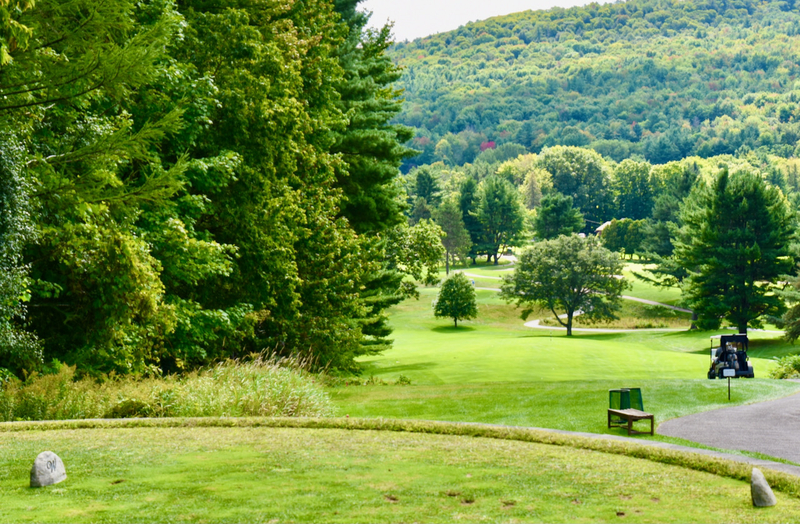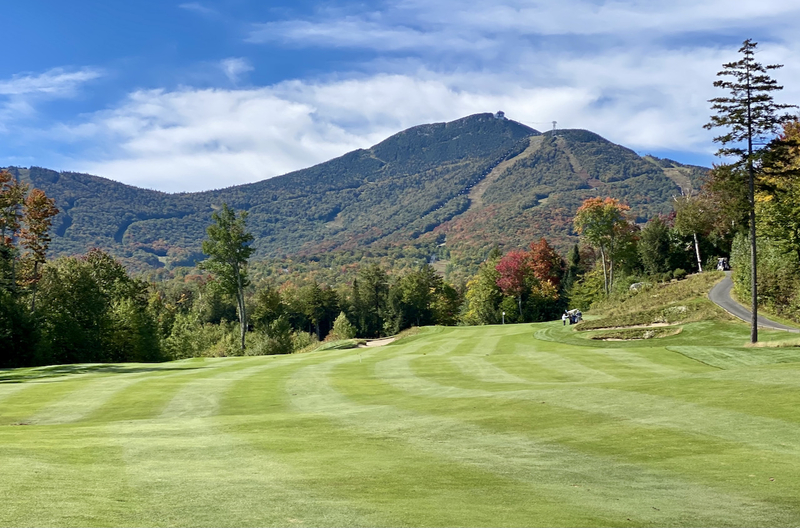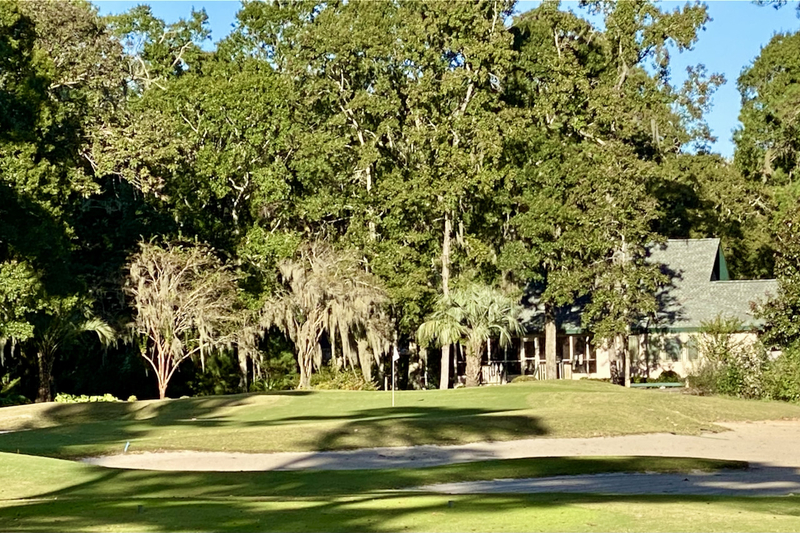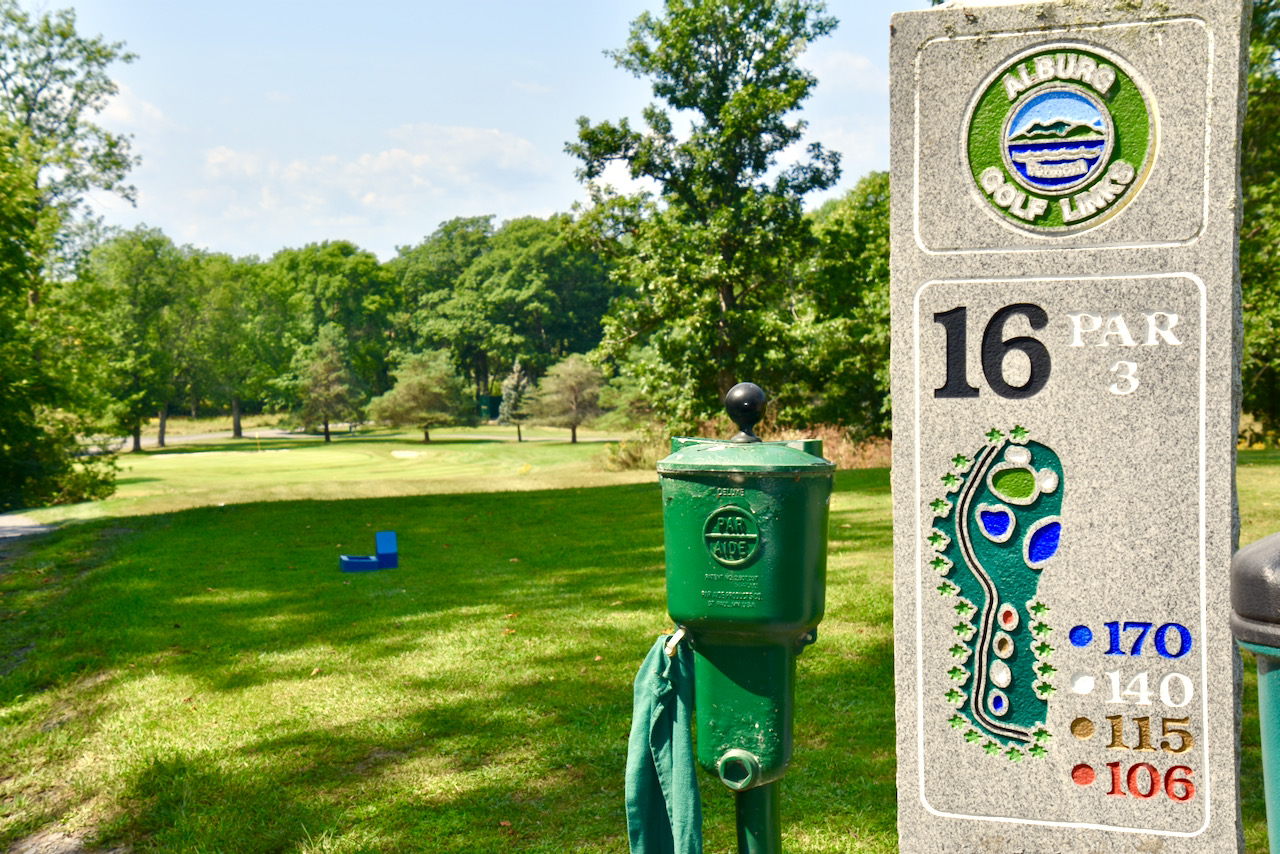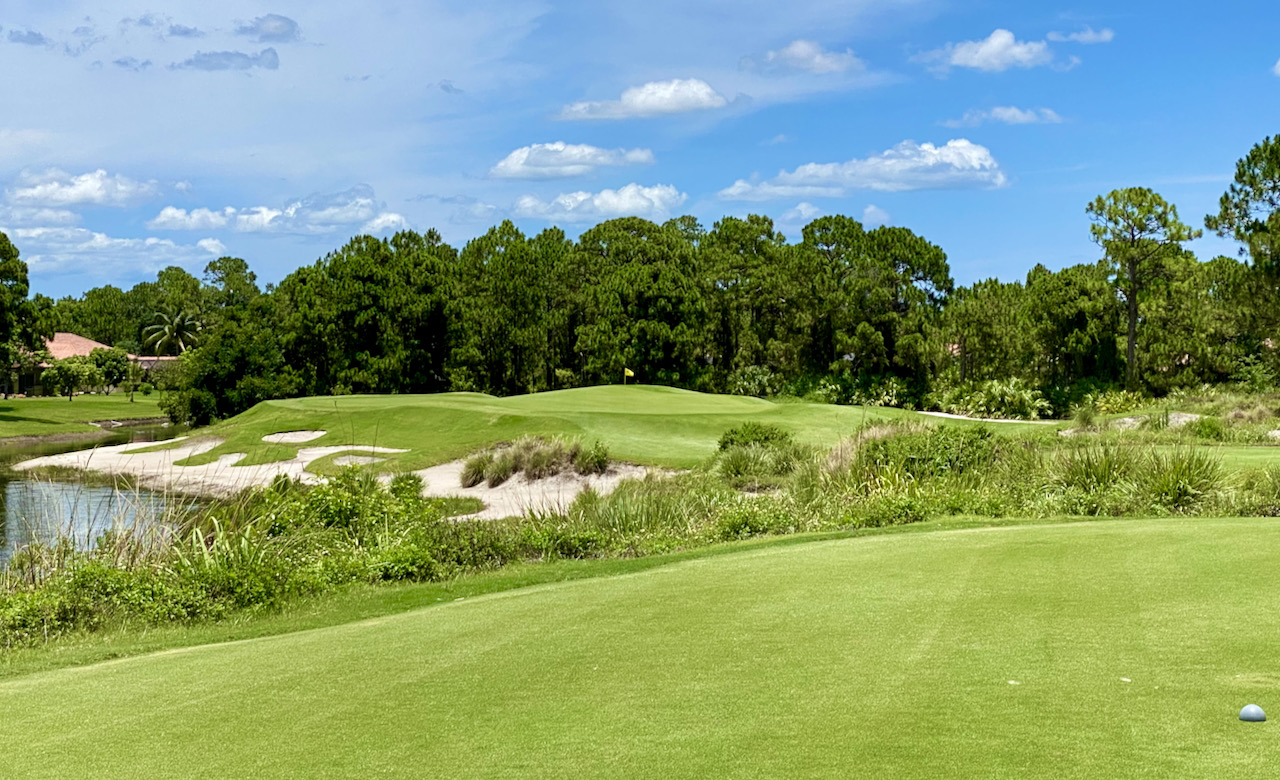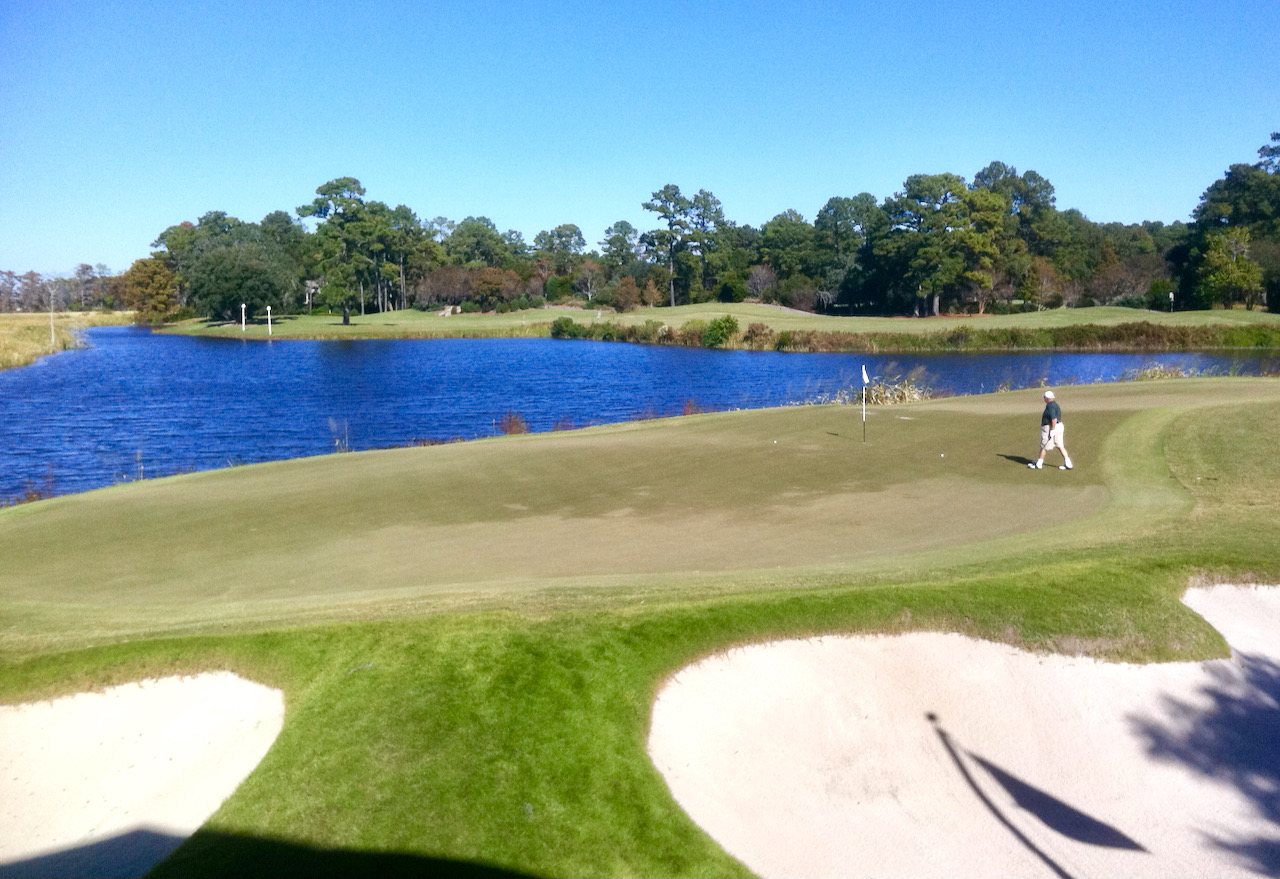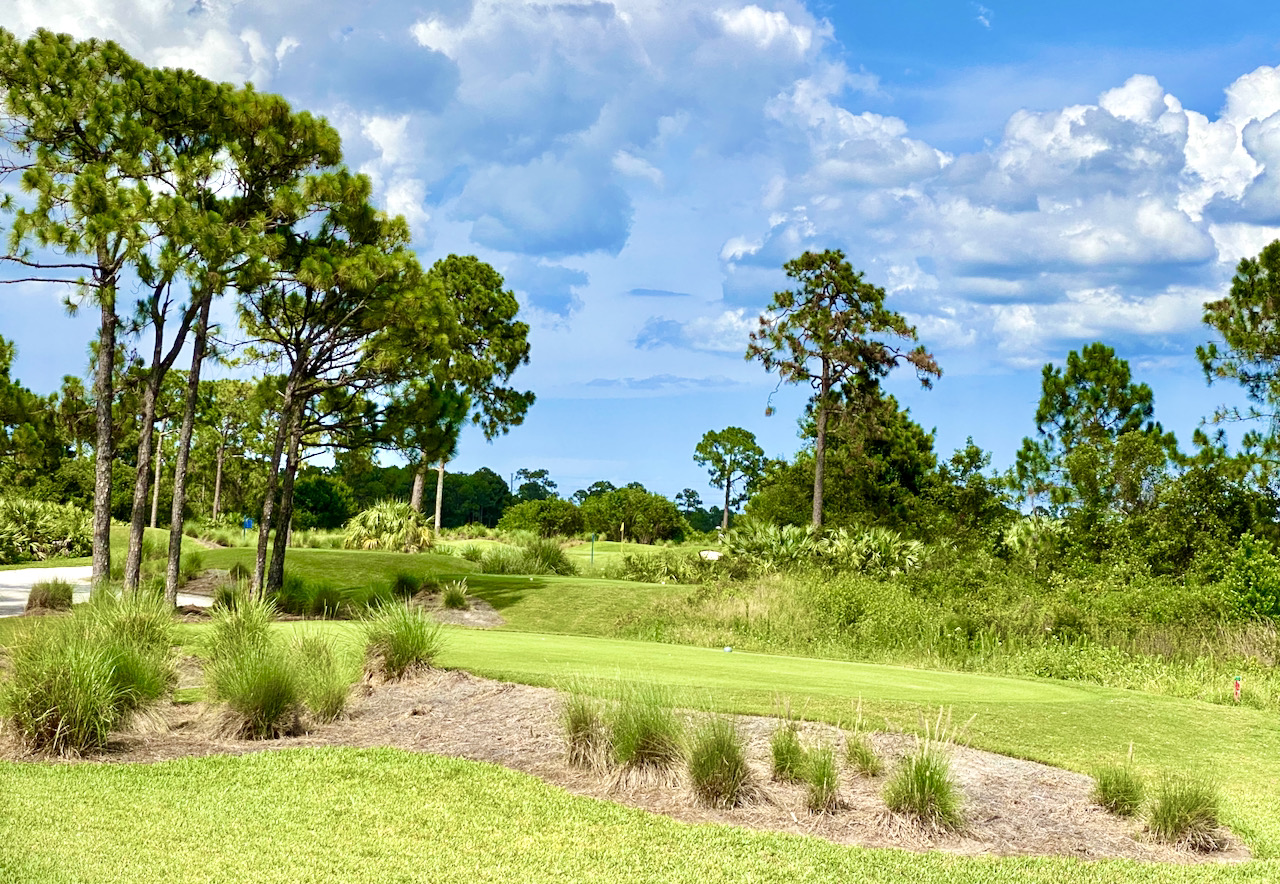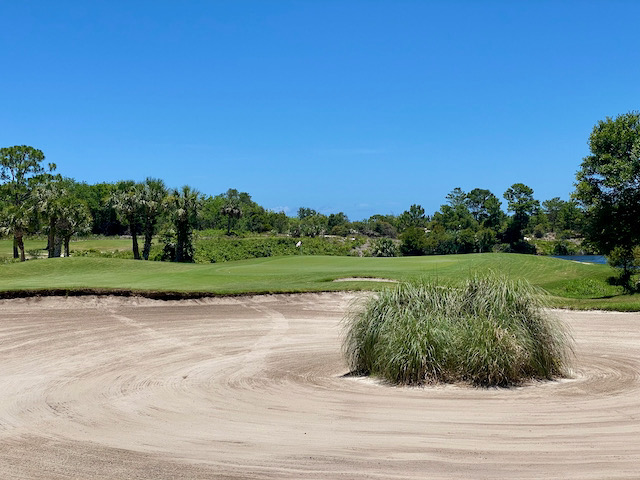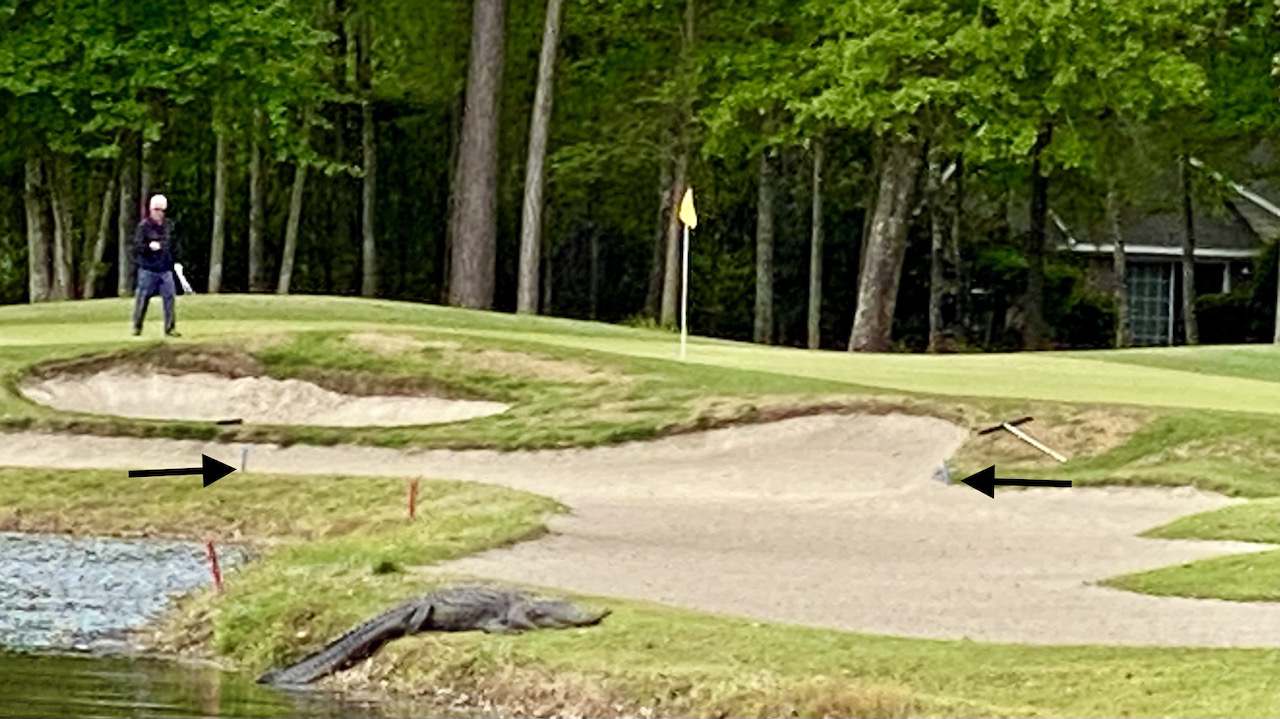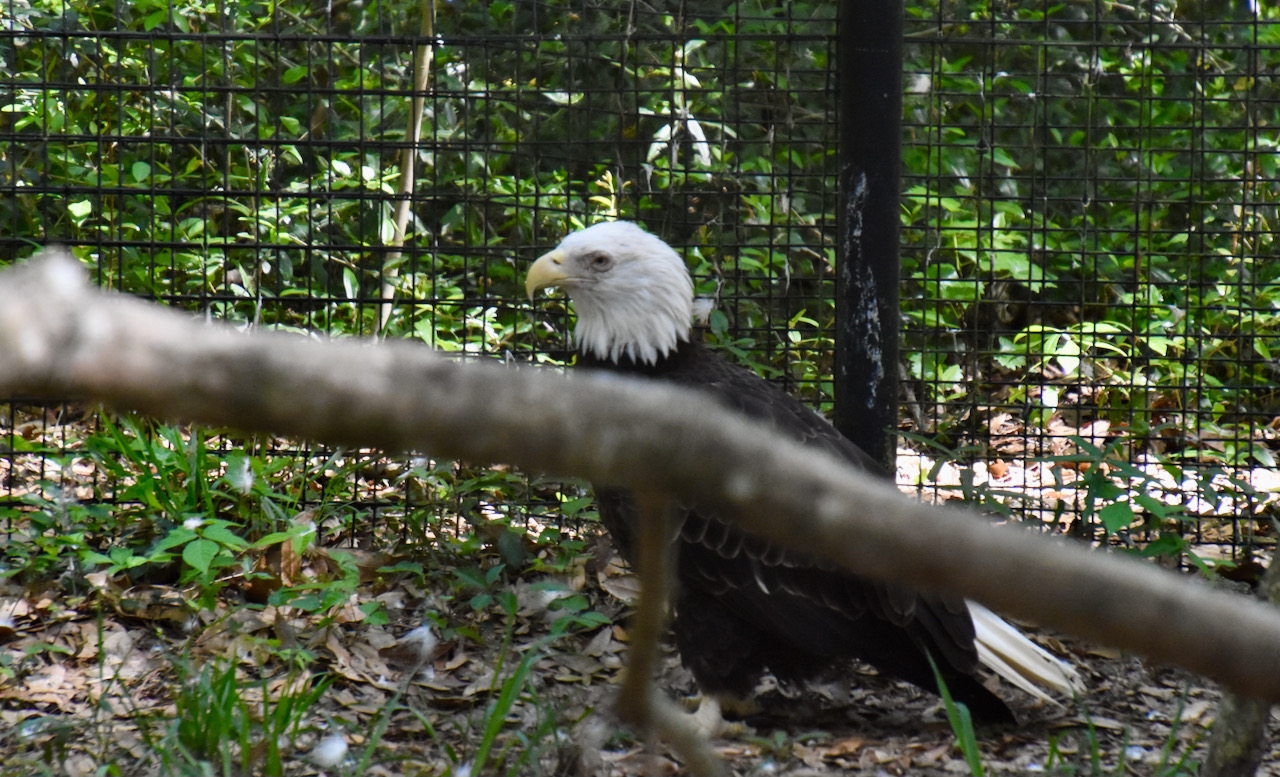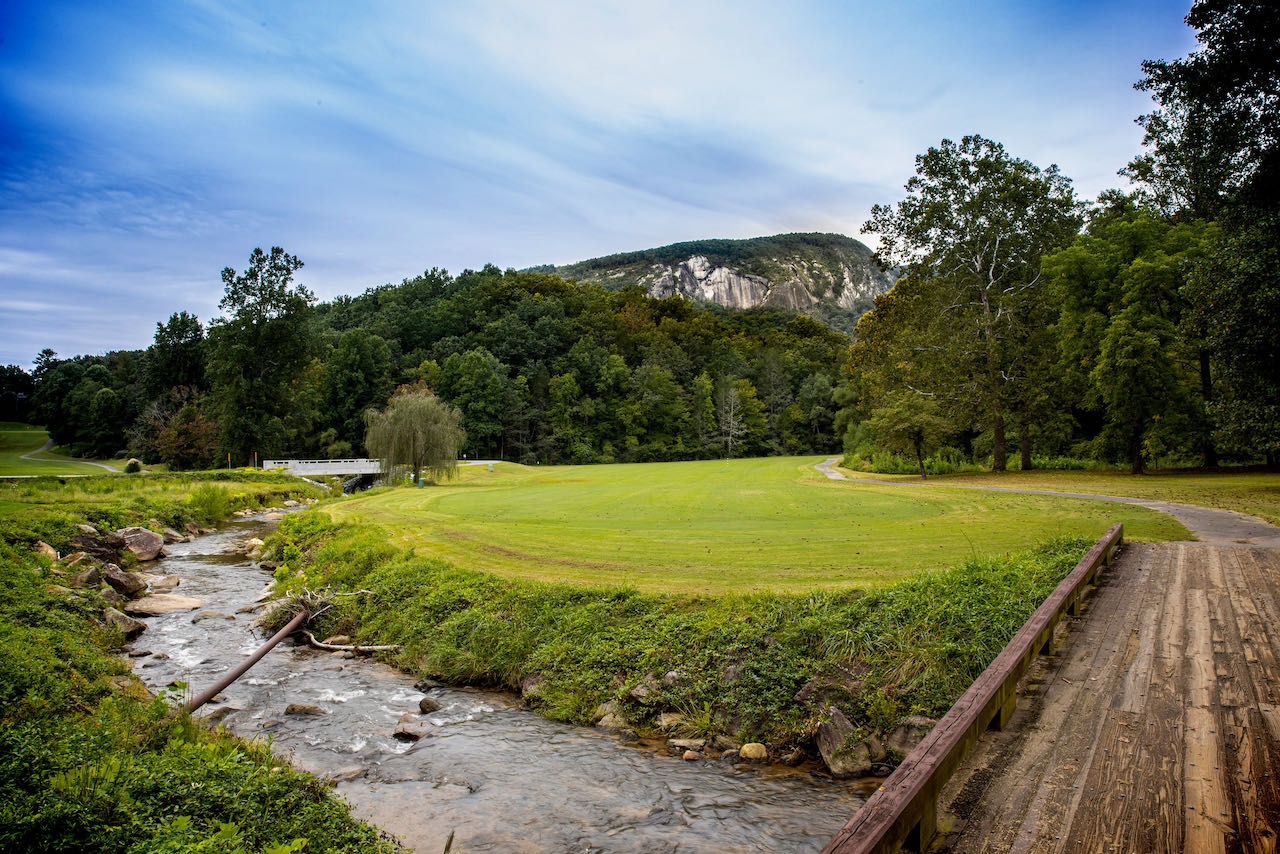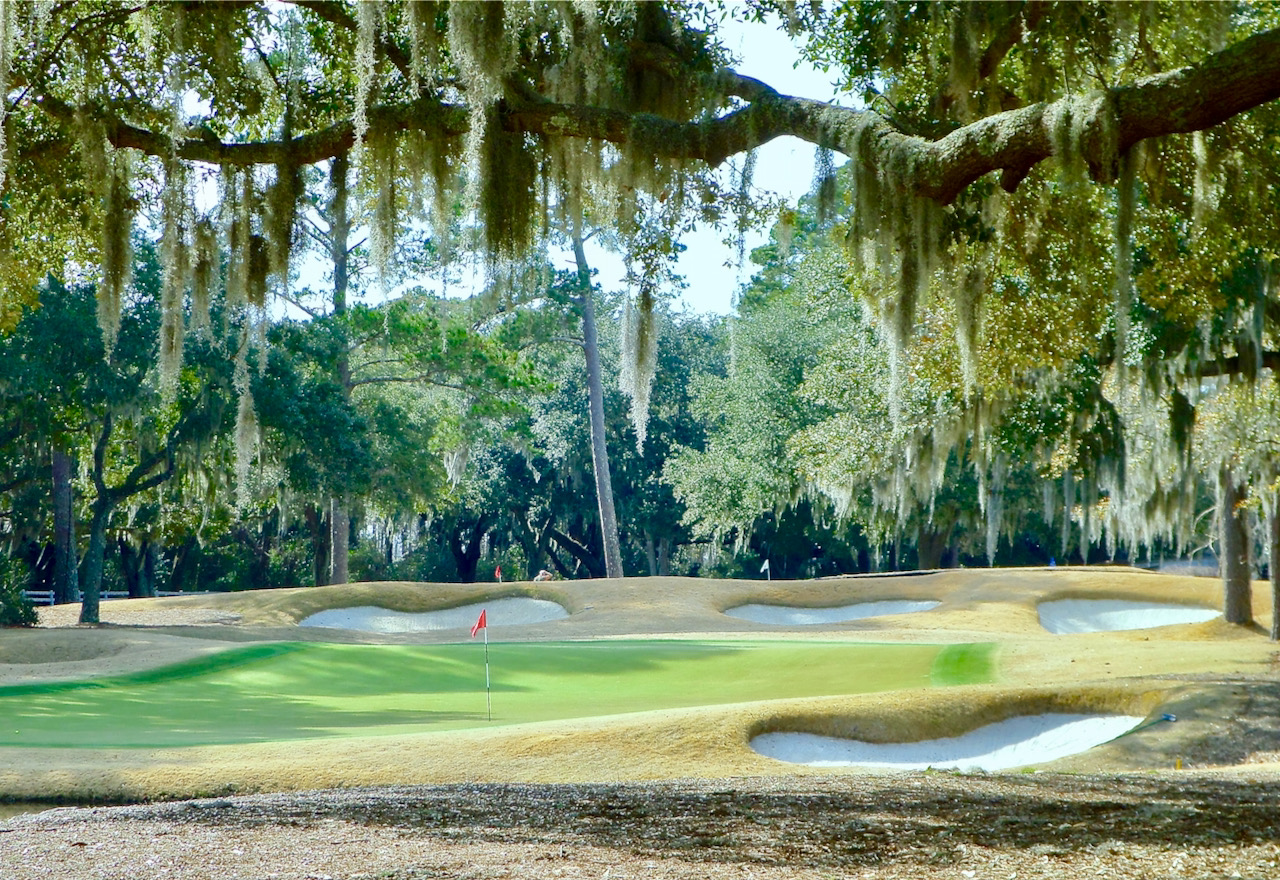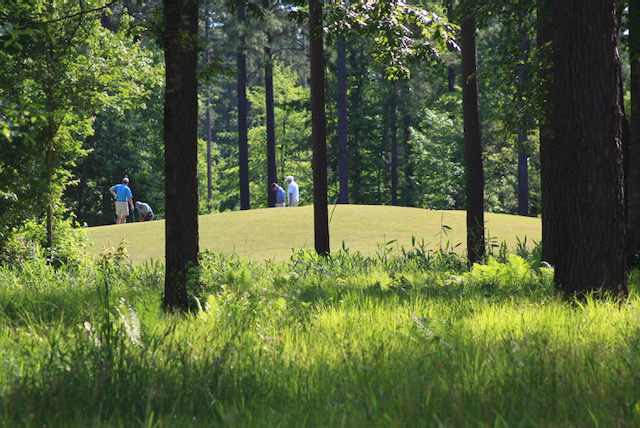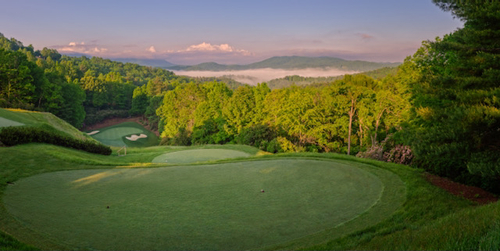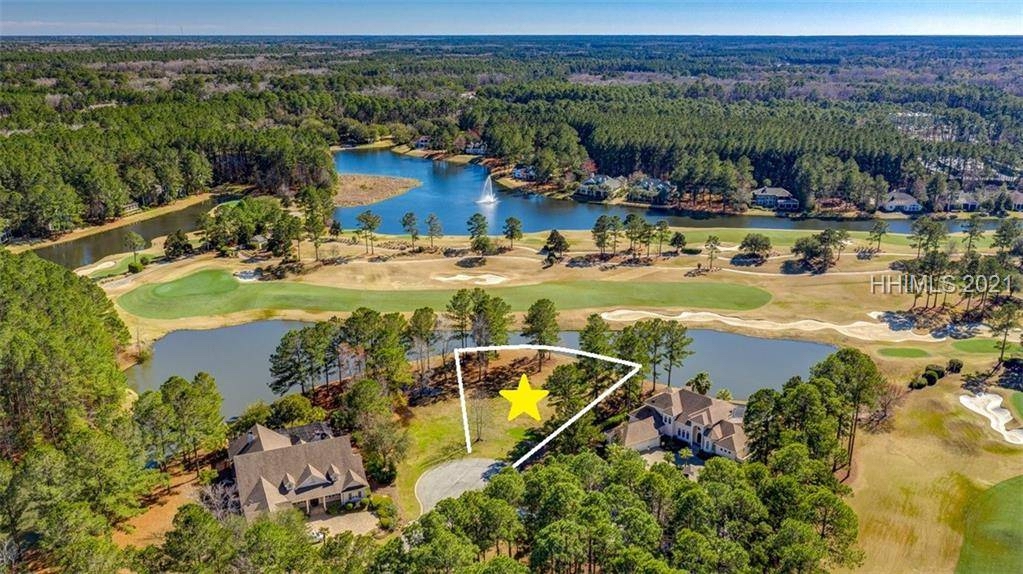My dirty little secret (until now) is that I prefer Greenville, SC, to the lavishly praised Asheville, NC. Asheville’s surrounding elevation may give it a slight edge topographically speaking, but the up country of South Carolina has plenty of natural charms (a river runs through downtown Greenville, for example, and some of the prime restaurants along Main St. use it to advantage). Downtown Greenville, with its angle-in parking under a canopy of trees shielding the city’s main esplanade, gives the city an easy-chair feeling compared with the big-city ethos of Asheville (which is, after all, sometimes compared to San Francisco). And traversing the Interstates that converge on Greenville even during rush hours seems like a Sunday drive compared with the mad-scientist jumble of highways that meet in an explosion of chaos in Asheville.
Moreover, there is no private community and golf club combination in Asheville that matches the value of Thornblade Club and the surrounding neighborhood in Greer, SC, a suburb of both Greenville and Spartanburg, two towns that have weathered the economic mess quite well thanks to their manufacturing (e.g. BMW of North America and Fluor Corp.) and higher education bases (Furman, Wofford, Bob Jones University). At just a $9,000 initiation fee for full-family golf membership, down from $18,000 a few years ago, and the replacement of all 18 of its golf course’s greens last year, Thornblade has stayed one giant step ahead of the problems similar private clubs are suffering across the land and maintained its robust membership levels (520 golf members and 785 members in all).
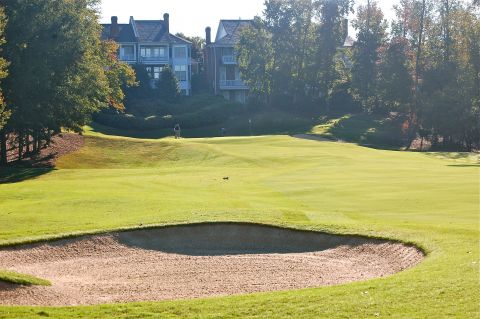
Condos back the first green at Thornblade, the only time during the round in which housing dominates the background.
I made my first trip to Thornblade five years ago, before its 20-year old greens were dug up and replanted with a newer, hardier breed of A1A4 bent grass. Bent grass, of course, is the putting surface of most championship golf courses, and Thornblade, which hosts the final round of the annual BMW Championship on the Nationwide Tour, may very well hold the distinction of having both groomed and housed the best collection of golfers in the world. The Haas family home –- as in father and Champions Tour pro Jay, who is also Thornblade's director of golf, and son Bill, the recent winner of the FedEx Cup and Tour Championship –- sits above the 6th green. Former U.S. Open winner Lucas Glover honed his game as a youth at Thornblade; his grandparents’ house still sits beside the 17th hole, a practice putting green in its backyard. Former LPGA star Dottie Pepper has moved from the community but is still a member of the club, as are tour pros Matt Bettencourt and Charles Warren. That is quite a formidable intra-club team Thornblade could field.
The staff at Thornblade is professional as well. My experience started when I parked at what I thought was a remote part of the parking lot so that I could finish a phone call. One of the red-shirted bag attendants sped out in his cart to take my bag, even though I was two rows from where the last car had parked. Director of Membership Morgan Page answered my questions about Thornblade’s recent history and its fees and dues with refreshing candor. At the snack bar window, I asked for sauerkraut with my hot dog, but none was available. One staff member scurried off to the main kitchen to retrieve some. And after I left my credit card at the snack bar window, the young lady who caught up with me before I sped to the 10th tee gave the impression she would have run as far as it took to catch me and return the card (or maybe it was to ensure I signed the slip, but either way, her seriousness of purpose reflected my overall experience at Thornblade).
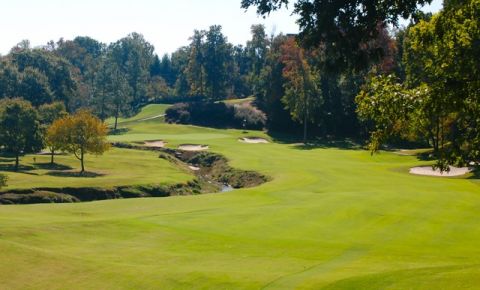
The par 4 8th hole is indicative of the importance of tee shot placement at Thornblade. A drive to the right side of the fairway presents a much better approach than short and left.
Thornblade’s golfing members are also, for the most part, well trained, as demonstrated by the one threesome and two foursomes that graciously waived me through during my 3:45 hour round. (Although golf professional Kevin Schreel might consider offering some sessions on ball-mark fixing, as I found myself fixing mine plus one on virtually every green on the otherwise well manicured course.) I can also attest from my previous visit five years earlier that the food at Thornblade is quite good and the dining rooms near capacity most nights of the week. I can’t imagine members complain about their $60 monthly food minimums at Thornblade Club.
Thornblade’s ranking in the golf rich state of South Carolina may suffer a bit because the sleek circa 1988 Tom Fazio design weaves its way through a neighborhood and, horrors, some homes are close enough to require the protection of out of bounds stakes on their back forty. (The South Carolina Golf Rating Panel, of which I am a member, placed Thornblade in the 37th spot in its 2010 rankings, but those impressions came before the five-month redo of all the greens on the course, as well as some other visual improvements.) In truth, though, most of the closest houses are not more than 100 yards down the fairways, and any homes at mid fairway or around the greens were well outside the field of play, or way above it. Perhaps the condominiums that hang over the back of the first green fix a notion of encroaching real estate in the minds of some, but this is Tom Fazio, he of the funneled fairways, and someone who can bury virtually every cart path can certainly build a course that keeps homes at bay. He does a good job of it at Thornblade.
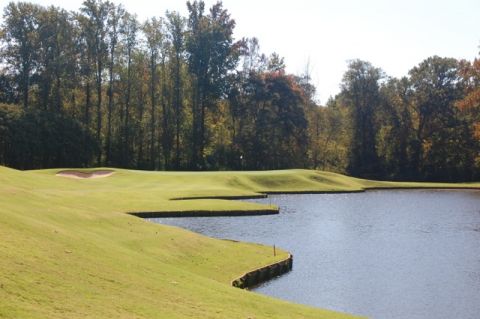
The combination of water and elevated green on the par 3 11th at Thornblade makes you think twice about club selection.
When my colleagues on the SC Golf Rating Panel revisit Thornblade, my guess is the club will move up at least a few spots from its position in 37th place. I certainly would rank it as highly as Cliffs at Glassy (north of Greenville), Belfair Plantation (Bluffton), the Daniel Island Ralston Creek course (near Charleston) and Wachesaw Plantation, south of Myrtle Beach, all of which placed ahead of Thornblade in the 2010 rankings. The reshaping and re-contouring of the greens as part of a $2 million renovation last year has certainly expanded the short-game challenges on the course, but five years after my first visit, the fairway and greenside bunkers appeared more sharply carved and a bit more menacing. The 71.3 rating and especially the 131 slope rating from the “short tees” (6,248 yards) certainly reflected the new premium on placement both off the tee and especially around the greens. (Note: To weather the long, hot summer, Thornblade has positioned a huge fan beside each green to ensure good air circulation and green greens.)
Except for the 190+-yard 17th, the par 3s at Thornblade are on the short side -– one was just 119 yards -- although they are either well bunkered or elevated hit-or-miss affairs (or both). The par 5s offered the best opportunities, as they typically do, to pick up a stroke or two. The major impediments to a good score at Thornblade from the “Enclave” tees I played were the par 4s. On a golf course under 6,300 yards, you don’t expect to play two-shotters of 415 yards (the 13th) and 442 yards (the 18th), easily one of the toughest finishing holes in the state. These were beastly challenges, although the 13th, as befits a long hole, did not offer much in the way of hazards, its fairway bunkers well beyond tee-shot distance yet well inside the approach shot distances. The only in-play bunker was the one that protected the back right of a green that sloped front right to rear left.
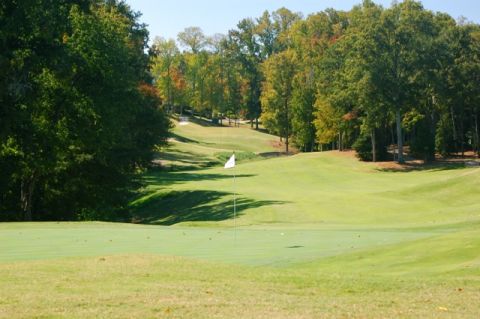
Fazio's longest par 4 at Thornblade, the finishing hole, is also its most narrow, with a fairway bunker in driving range below the hill on the right in the photo, and a creek that runs the entire length of the hole on the other side. The creek encroaches on the right side of the green where a short approach into a bunker that guards the green and stops some shots from rolling into the creek might actually save a stroke or two.
The 18th, however, was an entirely different story, with a menacing view from the elevated tee box to a fairway that tilts from a bunker guarding the left side to a wide creek that guards the entire length of the right side, in play all the way. To say the fairway appears narrow in the landing area is to understate the intimidation factor. The reward for stopping your tee shot on what appears to be the width of a tilted jet wing is an uphill, 200+ yard shot to a green protected by the Sahara at front right and the Gobi along the left side. The two-tiered green offers pin-placement opportunities from soothing to diabolical.
Although the 23-year old Thornblade Club and its surrounding community, where homes range in price from the $400s to well over $1 million, grew up together, it is not a traditional golf community. Although many of its members live within a few blocks of the club, Thornblade’s reputation draws families, empty nesters and retirees from near and farther (average age is 53). For northern retirees not wedded to the idea of a gated golf community with a residents-only membership, Thornblade Club might just expand your horizons…and your short game.
If you would like more information about Thornblade Club and local Greenville area real estate, please contact us.
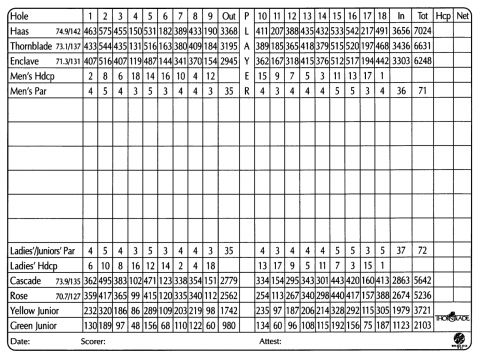
Thornblade scorecard.













